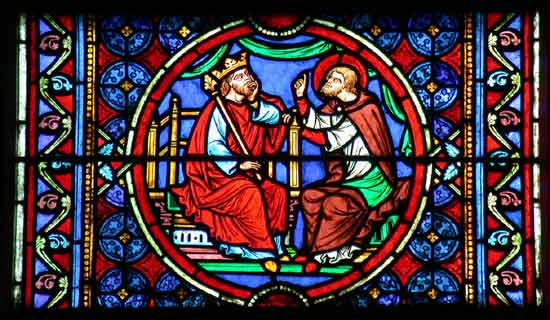|

The builders of the cathedral
The building of Notre-Dame de Paris is part of the architectural explosion which lasted from the 11th to the end of the 14th century in western Europe, and especially in France.
In Paris , Bishop Maurice de Sully initiated the project. Though he was of humble stock, a peasant's son of Sully-sur-Loire, and thus had no personal income that enabled him to provide the funds for the building of the new cathedral, he remarkably managed his ecclesiastical income and therefore his financial contribution was of first importance.
His successors: the first, Eudes de Sully, and other bishops such as Guillaume d'Auvergne or Simon Matifas de Buci, were eager in their own task to complete the building or to make some significant alterations.
The bishop was helped in his task by the chapter which, from the 9th century onwards, had grouped all the canons ministering in the cathedral. As documents are lacking, we don't know whether, during the 12th century, the chapter provided funds regularly to the work or not. Anyway, during the 13th century, as this chapter had its own benefices, it took a more and more important part in managing the work site, especially the building of the Hotel-Dieu (the Cathedral hospital).


In the 13th century, it was pledged and then purchased by King Saint Louis who had the 'Sainte Chapelle' built in Paris to house it.
During the French Revolution, the Crown of Thorns was kept in the Bibliotheque Nationale (French national library).
In 1801 the Concordat with Rome gave it back to the Archbishop of Paris who in 1806 brought it to the Cathedral treasury where it remains.
The relic is as a ring of twisted rushes, to which thorns were attached to form the Crown.
Napoleon I and Napoleon III each gave a reliquary to protect it. The first reliquary is neo classical and the second is neo gothic, made by Viollet-le-Duc's workshop. Both are permanently exhibited in the Cathedral treasury.
http://whitemouse.ru/photo/paris/cite_ndp.wmb






